Chemical approaches to discover the full potential of peptide nucleic acids in biomedical applications
- PMID: 34367346
- PMCID: PMC8313981
- DOI: 10.3762/bjoc.17.116
Chemical approaches to discover the full potential of peptide nucleic acids in biomedical applications
Abstract
Peptide nucleic acid (PNA) is arguably one of the most successful DNA mimics, despite a most dramatic departure from the native structure of DNA. The present review summarizes 30 years of research on PNA's chemistry, optimization of structure and function, applications as probes and diagnostics, and attempts to develop new PNA therapeutics. The discussion starts with a brief review of PNA's binding modes and structural features, followed by the most impactful chemical modifications, PNA enabled assays and diagnostics, and discussion of the current state of development of PNA therapeutics. While many modifications have improved on PNA's binding affinity and specificity, solubility and other biophysical properties, the original PNA is still most frequently used in diagnostic and other in vitro applications. Development of therapeutics and other in vivo applications of PNA has notably lagged behind and is still limited by insufficient bioavailability and difficulties with tissue specific delivery. Relatively high doses are required to overcome poor cellular uptake and endosomal entrapment, which increases the risk of toxicity. These limitations remain unsolved problems waiting for innovative chemistry and biology to unlock the full potential of PNA in biomedical applications.
Keywords: PNA; antisense; chemical modifications; diagnostics; peptide nucleic acid.
Copyright © 2021, Brodyagin et al.
Figures









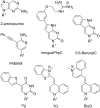

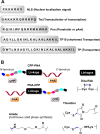



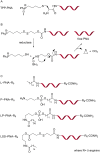

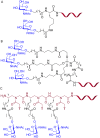
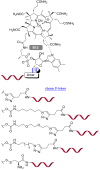




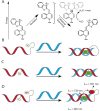


Similar articles
-
Therapeutic and diagnostic applications of antisense peptide nucleic acids.Mol Ther Nucleic Acids. 2023 Dec 5;35(1):102086. doi: 10.1016/j.omtn.2023.102086. eCollection 2024 Mar 12. Mol Ther Nucleic Acids. 2023. PMID: 38204913 Free PMC article. Review.
-
Recent advances in chemical modification of Peptide nucleic acids.J Nucleic Acids. 2012;2012:518162. doi: 10.1155/2012/518162. Epub 2012 Sep 6. J Nucleic Acids. 2012. PMID: 22991652 Free PMC article.
-
Triplex-Forming Peptide Nucleic Acids with Extended Backbones.Chembiochem. 2020 Dec 1;21(23):3410-3416. doi: 10.1002/cbic.202000432. Epub 2020 Aug 31. Chembiochem. 2020. PMID: 32697857 Free PMC article.
-
A targeted peptide nucleic acid to down-regulate mouse microsomal triglyceride transfer protein expression in hepatocytes.Bioconjug Chem. 2003 Nov-Dec;14(6):1077-82. doi: 10.1021/bc0340417. Bioconjug Chem. 2003. PMID: 14624620
-
Potential applications of peptide nucleic acid in biomedical domain.Eng Rep. 2020 Sep;2(9):e12238. doi: 10.1002/eng2.12238. Epub 2020 Jul 24. Eng Rep. 2020. PMID: 32838227 Free PMC article. Review.
Cited by
-
Triplex-Forming Peptide Nucleic Acid Controls Dynamic Conformations of RNA Bulges.J Am Chem Soc. 2023 May 17;145(19):10497-10504. doi: 10.1021/jacs.2c12488. Epub 2023 May 8. J Am Chem Soc. 2023. PMID: 37155726 Free PMC article.
-
The Design of a Participatory Peptide Nucleic Acid Duplex Crosslinker to Enhance the Stiffness of Self-Assembled Peptide Gels.Angew Chem Int Ed Engl. 2024 Jan 22;63(4):e202313507. doi: 10.1002/anie.202313507. Epub 2023 Dec 20. Angew Chem Int Ed Engl. 2024. PMID: 38057633 Free PMC article.
-
Therapeutic and diagnostic applications of antisense peptide nucleic acids.Mol Ther Nucleic Acids. 2023 Dec 5;35(1):102086. doi: 10.1016/j.omtn.2023.102086. eCollection 2024 Mar 12. Mol Ther Nucleic Acids. 2023. PMID: 38204913 Free PMC article. Review.
-
LNA blockers for improved amplification selectivity.Sci Rep. 2023 Mar 24;13(1):4858. doi: 10.1038/s41598-023-31871-7. Sci Rep. 2023. PMID: 36964235 Free PMC article.
-
Recent Advancements in Development and Therapeutic Applications of Genome-Targeting Triplex-Forming Oligonucleotides and Peptide Nucleic Acids.Pharmaceutics. 2023 Oct 23;15(10):2515. doi: 10.3390/pharmaceutics15102515. Pharmaceutics. 2023. PMID: 37896275 Free PMC article. Review.
References
Publication types
Grants and funding
LinkOut - more resources
Full Text Sources
Other Literature Sources
